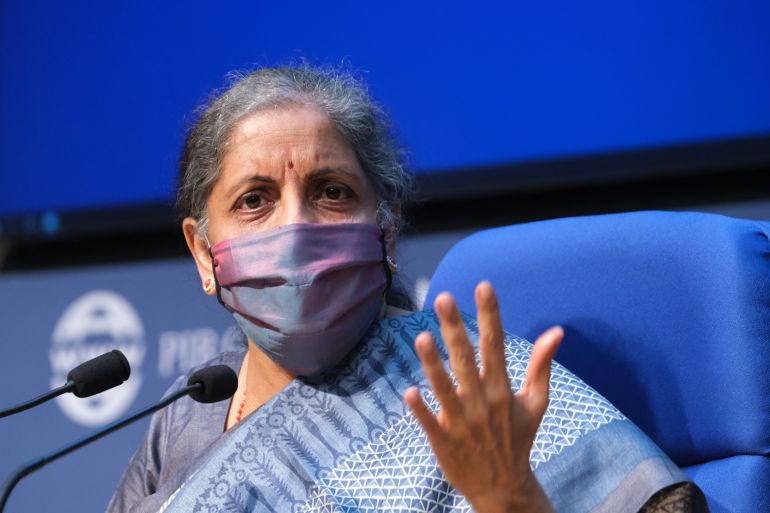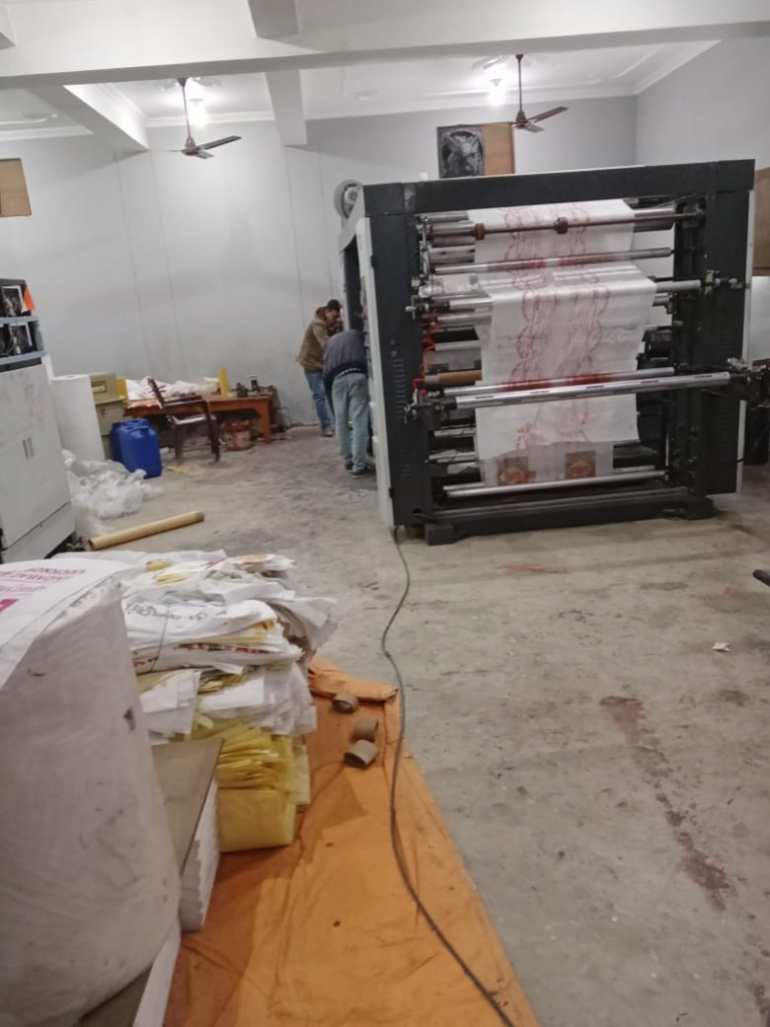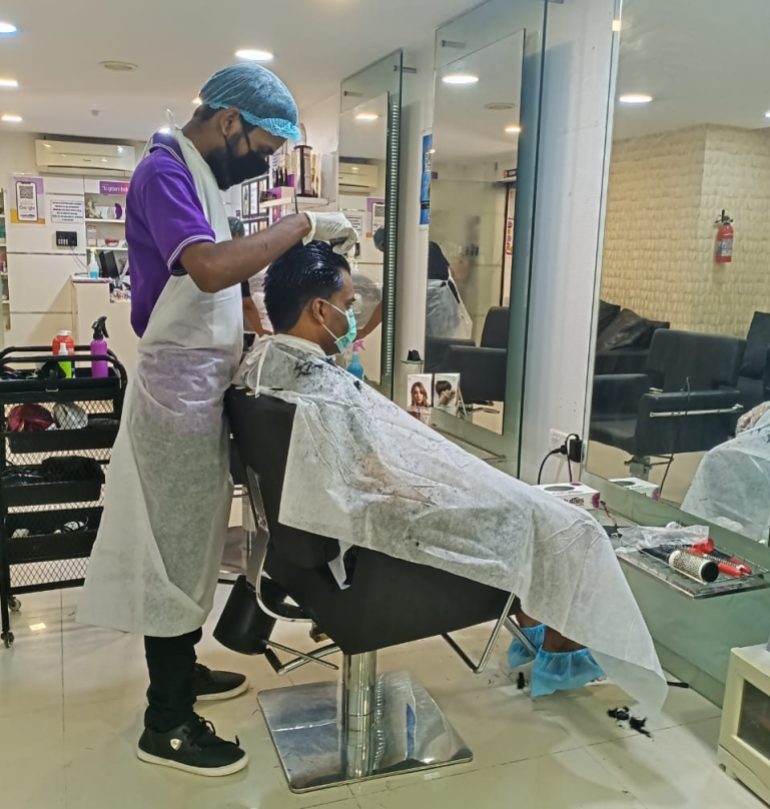India’s dilemma: Close fiscal deficit or help struggling millions
To sustain economic recovery, the upcoming budget will have to balance fiscal prudence with funding the pandemic-struck.

New Delhi, India – As the pandemic lashed across India in the past two years, Prince Singh, a small producer of cotton tote bags in Ayodhya in Uttar Pradesh state, dipped into family savings, slashed the salaries of his six workers and took a personal loan on a new credit card – all to keep the business afloat.
Demand for shopping bags revived after the second wave ebbed last summer and as lockdown restrictions eased, allowing Singh to gradually ramp up production to 300-400kg a day by December, though that was well below his pre-pandemic daily average of 1,000kg. But now it’s “impossible” to sell more than 50kg a day, he says, as the Omicron variant spreads through the country.
Keep reading
list of 4 itemsTata regains Air India control after years of taxpayer bailouts
Indian capital lifts weekend curfew as Omicron wave slows
Google to invest $1bn in India’s number two mobile operator
Singh is no longer sure if his manufacturing business will survive all the chaos. “Customers are driving bargains, forcing us to drop prices,” he says, even as rising diesel and other raw material prices are “squeezing” him.
The pandemic has affected India’s small businesses, which have received little to no government stimulus, testing their resilience as they fear for their survival. These businesses are also typically more labour-intensive than larger firms and if they fail to survive – a real concern as they are being whipsawed by loss of pricing power and rising inflation – more families will sink with them.
Economists say that, apart from the impact of Omicron, the speed and strength of India’s recovery depends on the choices made by the architects of the country’s budget for the upcoming fiscal year – which runs April through March.
India’s finance minister Nirmala Sitharaman will present the national budget on February 1, providing new targets for government spending, tax receipts, economic growth and fiscal deficits.
“I fear that if the upcoming budget goes for fiscal consolidation, the recovery won’t sustain,” says Lekha S Chakraborty, a professor at the National Institute of Public Finance and Policy (NIPFP).
The country’s mounting public debt and deficits do pose a risk to macroeconomic stability and seem to indicate a need for fiscal prudence, but such measures can come later.
When laying out last year’s budget, the government said it would aim to reduce its fiscal deficit to 4.5 percent of GDP by the financial year ending March 2026, choosing at the time instead to spend money on infrastructure to stimulate the economy.
‘A halting recovery’
The government has a bit of wiggle room for the upcoming budget as revenue from taxes has exceeded its expectations. The question that economists and small businessmen like Singh have is if it will use that money to reduce the fiscal deficit or to support the economy, and specifically to help low-income households and businesses.
Given the uneven nature of India’s recovery, several economists, including at the government-owned State Bank of India, prefer the latter and want the upcoming budget to increase support for the pandemic-ravaged parts of the economy.

India’s patchy recovery can be seen from the Advance Estimates for 2021-2022 released by the National Statistical Office in early January. The estimates – technically projections as they are based on data from the first six months of the current financial year which ends in March – show that while the economy will recover by March, at least to its pre-COVID level of output, Indians will continue to spend less money than they did before the pandemic.
India’s central bank is cognisant of this and, in its latest monthly bulletin, said the recovery was “unevenly gaining traction” and that while manufacturing “exhibited a halting recovery”, services are yet to catch up with their pre-pandemic levels.
Even as data on how much Omicron has damaged the economy is awaited, the Reserve Bank of India anticipates scant downside risk to the Indian economy from it, which, it says, “may turn out to be more of a flash flood than a wave”.
‘Uneven access’
But, while the biggest companies are reporting a growth in profits, small entrepreneurs say consumers are reluctant to spend.
Hemant Nagpal invested 20 million rupees ($266,212) to develop a software product to help businesses file invoices and taxes related to the national Goods and Services Tax. With an average of 350-odd new companies registering every day with the government’s Ministry of Corporate Affairs before the pandemic, he was hopeful that he could easily snag at least 200 clients a month who would buy software from his company YourBooks, which he started in June 2018, to help them in their operations.
But the pandemic hit his math as the government website is seeing less than 200 new businesses registering a month, and hardly any are willing to spend the 300 rupees ($4) a month on the start-up’s software.
“Small businesses are not ready to pay small amounts,” says Nagpal, who worked at Fidelity and Ericsson before starting YourBooks. “The product hasn’t taken off not because it isn’t good but because COVID has made the market highly conservative.”
NIPFP’s Chakraborty says India’s growth recovery is uneven because of the type of stimulus administered. “Our stimulus, largely credit infusion from the central bank, has a big loophole, which is uneven access,” she says.
“The really small companies are not borrowing out of fears that due to uncertainty over the demand situation they could be left with no option but to take on more expensive personal loans to pay back any bank loans they take at this point.”
Bag manufacturer Singh says even if he gets a loan, “how will I repay a loan when there’s so little demand.” His application for a loan with easier terms under a scheme announced by the government was rejected.
“Other countries gave grants to small businesses, we’ve had no support from the government,” Sunil Varghese, owner of Hevea Engineers, a small printing roller manufacturer in Chennai, told Al Jazeera. There are no cash flows and paying monthly costs over the last two years has eroded the company’s reserves.
“Survival of our 30-year-old small scale industry unit is under threat because banks are piling pressure to return the COVID emergency loan taken in the beginning of the pandemic,” says Varghese.
Chakraborty says the government needs to make the recovery more broad-based and says the upcoming budget should focus on funding and resolving the humanitarian crisis instead of prioritising fiscal correction or infra spending.
“Capex is important for the long-term growth recovery, but it’s more important that the humanitarian crisis gets fiscal policy attention. Capex alone cannot take care of that,” she says. She believes tax cuts, specifically for small-income households and very small businesses, will be a faster way to boost demand.

“Tax concessions will go a long way in drawing women back into salons, who are staying away for the fear of the virus, and due to reduced family incomes and increased economic hardships,” agrees C K Kumaravel, chief executive and co-founder of Naturals Salon & Spa which has more than 400 franchises across six states, all run by women, most of whom are first-generation entrepreneurs.
Business is slowly picking up after the chaos of the first two waves, when the company and its network of franchises struggled to pay their 11,000 employees, even after salary cuts, as revenues dipped 76 percent to 120 million rupees ($1.5m). Many of its franchisees ran out of savings, and had to borrow, including by pledging their jewellery, to keep their tiny businesses alive.
“I am very disappointed that the government remains unconcerned,” says Kumaravel.